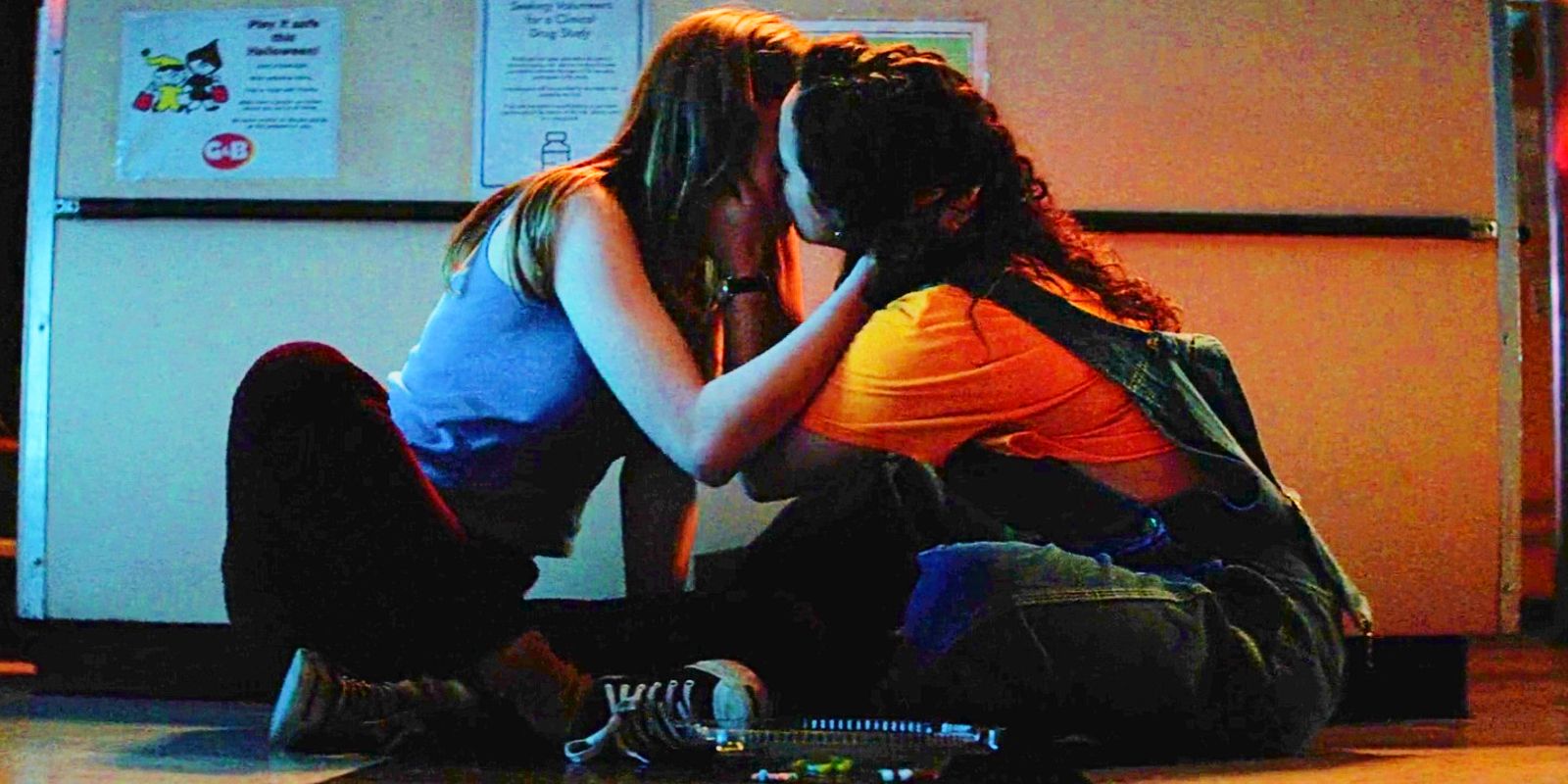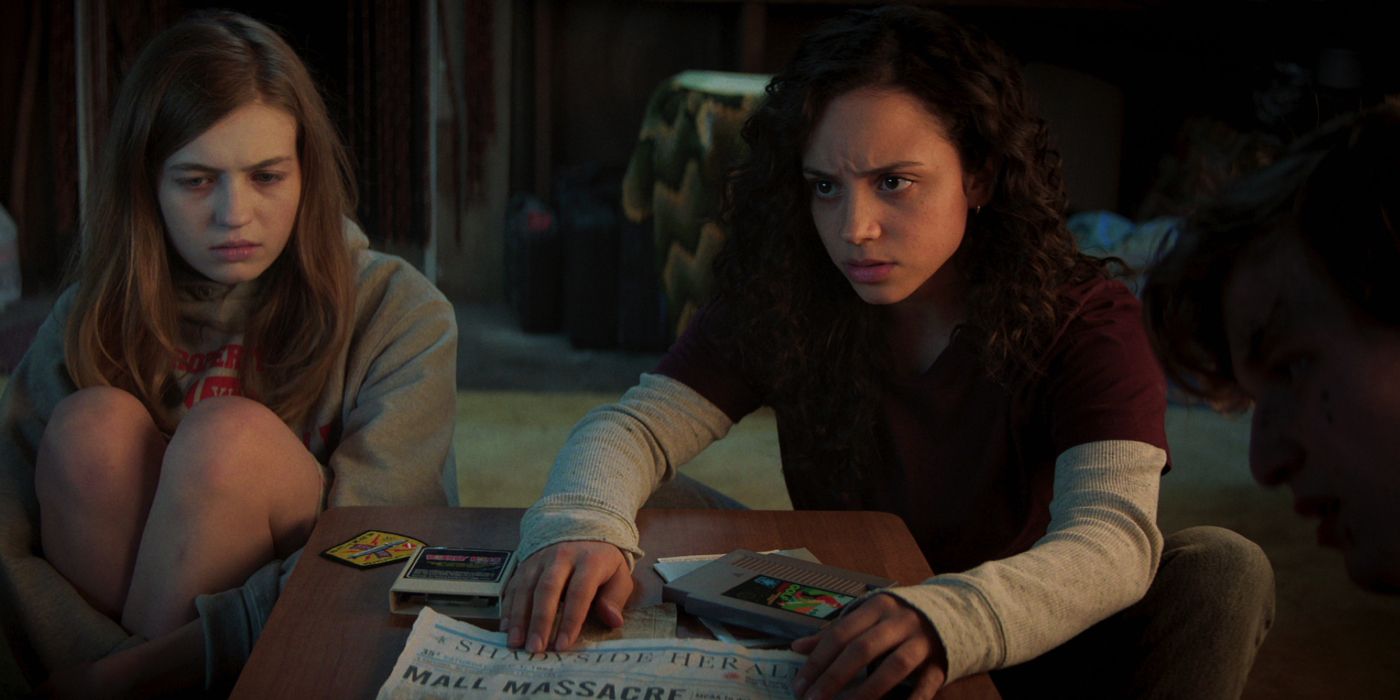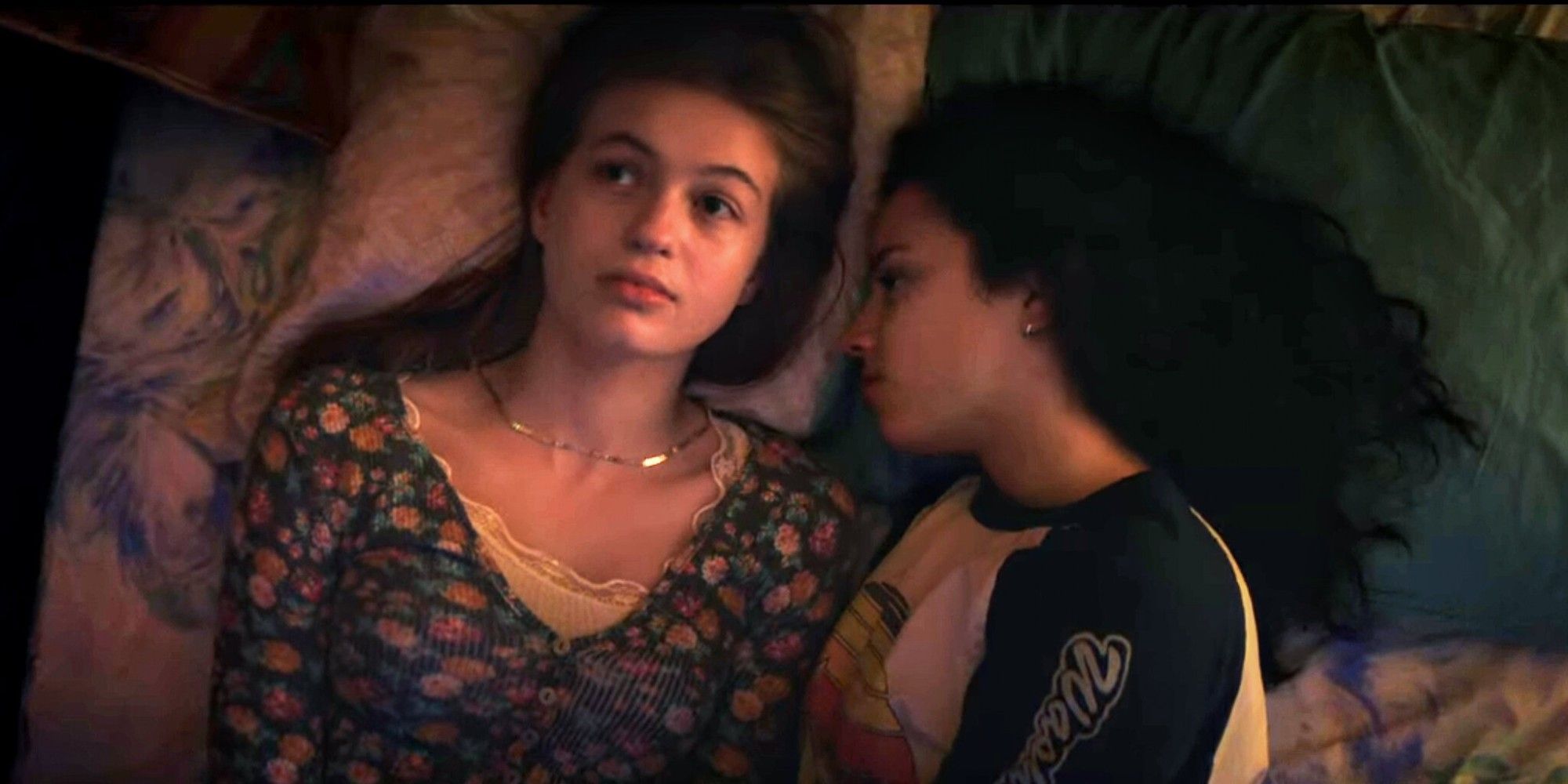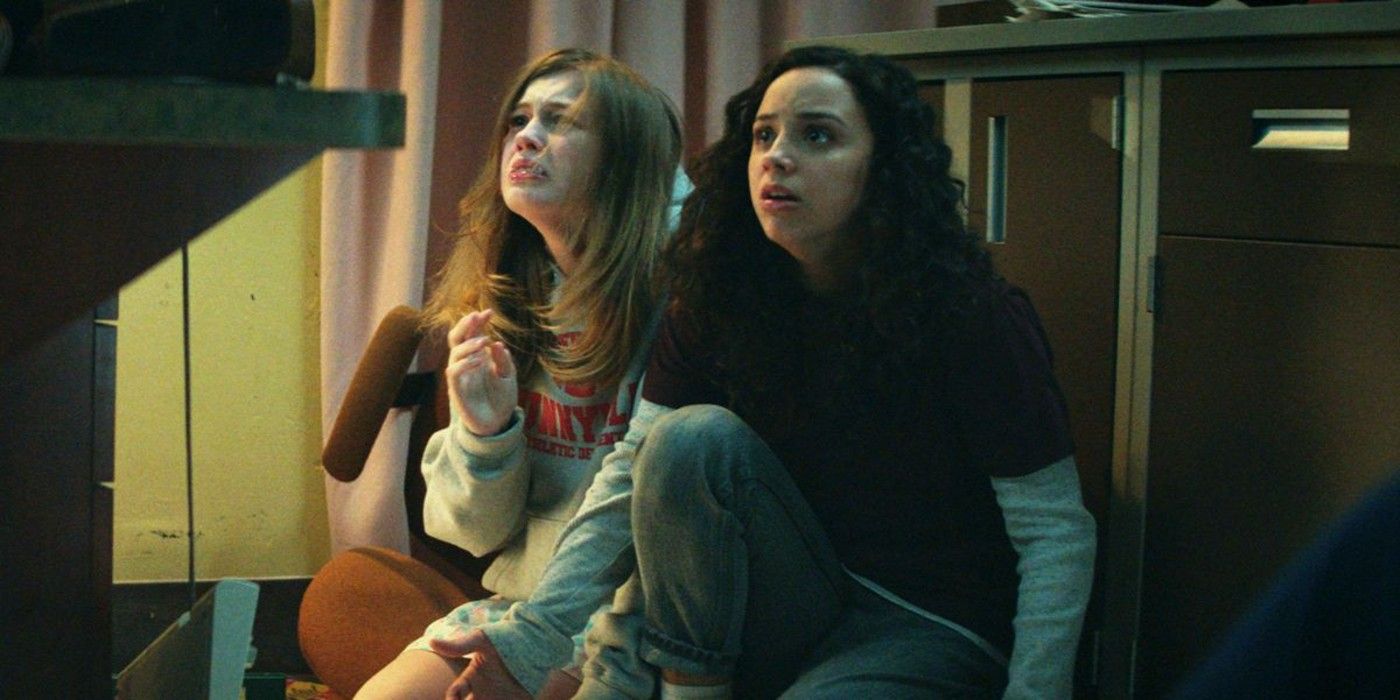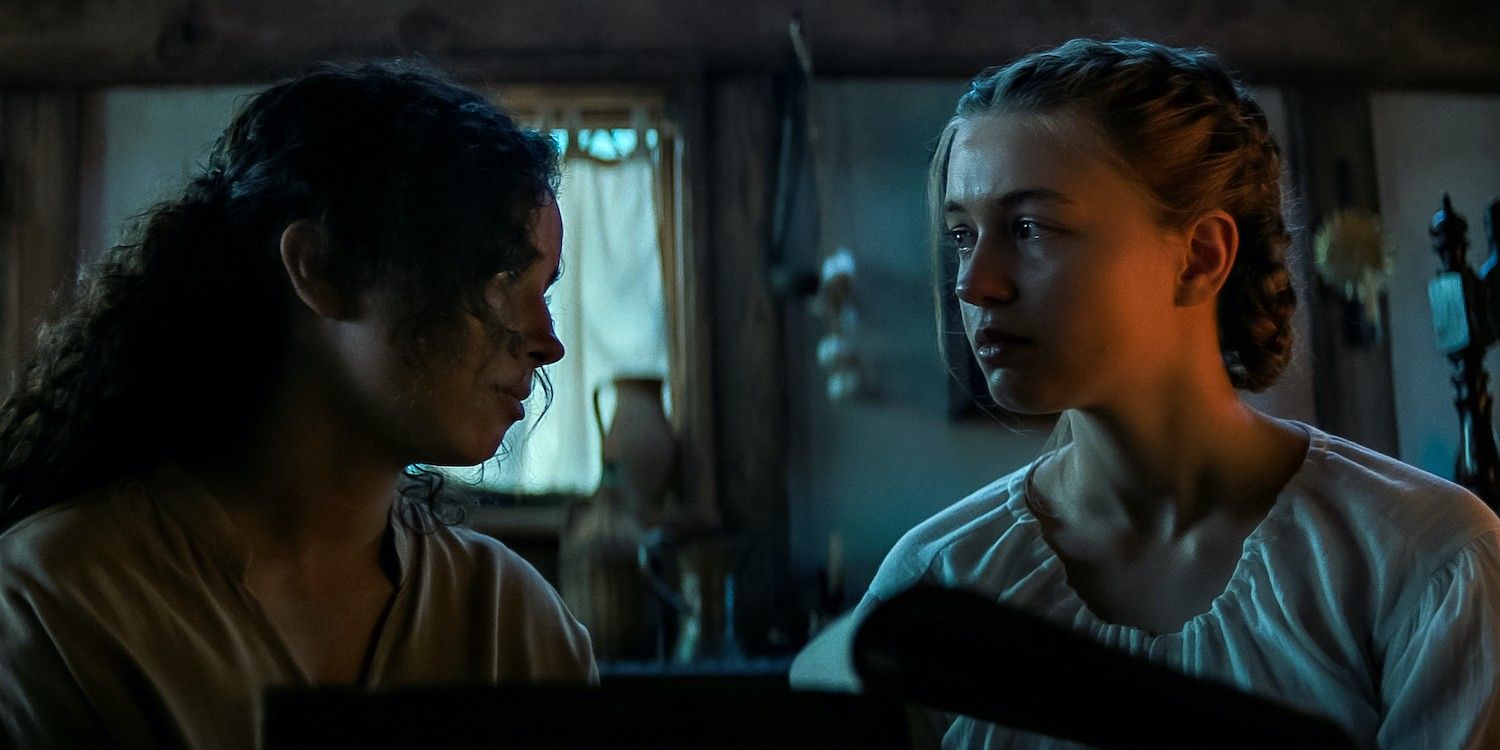Warning: The following contains spoilers for the Fear Street trilogy.
Queer representation in the horror genre is severely lacking — that's why the representation in the Fear Street trilogy is such a win for the LGBTQ+ community. The slasher trilogy features a queer relationship at the heart of its plot, something that is greatly missing from other horror films; Sam and Deena's relationship in Fear Street is thus a win for representation in the genre.
Based on the books by R.L Stine, the Fear Street trilogy — Fear Street: 1994, Fear Street: 1978, and Fear Street: 1666 — tells the story of the town of Shadyside over a span of 350 years. Shadyside is plagued with murders, and an urban legend says the killings are the result of a curse placed on the town in 1666 by a witch named Sarah Fier. When Sarah Fier comes for Sam Fraser (Olivia Scott Welch), a former Shadyside resident who now lives in its rival city of Sunnyvale, it's up to her ex-girlfriend Deena (Kiana Madiera) and her crew of Shadyside misfits to save Sam from the grip of the witch. In their fight for Sam's life, the pair reawaken their love for each other while also uncovering the truth about Sarah Fier's own forbidden love — the preacher's daughter, Hannah Miller.
Fear Street is, ultimately, a story about those whose story frequently isn't told. Horror movies have traditionally featured white, straight protagonists — much like every other film genre — but Fear Street's main characters are composed of POC and LGBTQ+ characters. Together, this group of Shadyside's biggest misfits is able to save the day from the true villain; a white, successful man from Sunnyvale.
The Lack Of Queer Representation In Horror
LGBTQ+ representation in Hollywood may be on the rise, but it's still severely lacking; this is especially so in the horror genre. Some major horror flicks have upped their representation — IT: Chapter 2 added a queer storyline to Richie Tozier's character, What Keeps You Alive is a thriller featuring a newlywed lesbian couple, and the 2020 follow-up to The Craft, The Craft: Legacy, featured multiple LGBTQ+ storylines. Still, queer characters are lacking from horror movies, and when they're included, they often fall into the 'bury-your-gays' trope.
When queer characters are included in a film, they're more likely to die than straight characters. This likely evolved from the fact that queer-coded characters tended to be the villains, meaning the character needed to be "punished" by the end of the film. There is also the case that the token minority is seen as the most expendable; the trope of the Black character dying first has evolved into the queer character dying first. The storyline doesn't rely on the character, yet the movie attempts to get props for being "inclusive." Fear Street is unlike other slasher movies in which queer characters hardly ever make it to the end of the movie — and if they do, it tends to only be one-half of a queer couple, tragically separated by fate.
Deena & Sam's Relationship Is The Heart Of The Fear Street Trilogy
Deena and Sam are the heart of the Fear Street story. Instead of being a side plot included for the kudos of simply having queer characters, their relationship is a central part of the movies. Their relationship is the catalyst of the plot; while Deena wants to end the curse for the sake of Shadyside, it's her love for Sam that pushes her to risk her life, time and time again. Every step of the way, it's their love for each other that is driving the plotline forward. Sam ends up part of the curse due to Deena's anger, and when their attempts to save Sam backfire at the end of Fear Street: 1994, she is willing to risk her own life to spare Sam from being taken by Sarah Fier.
No masked killer or evil witch would keep Deena from her love, and when Sam is possessed and used in an attempt to kill Deena, Deena's only thought is to save Sam above herself. In their quest to unravel the curse, Sam and Deena discover there's another forbidden relationship at the heart of it all. Being from two warring cities — and with Sam's homophobic mother — their relationship seems doomed to fail. However, their relationship comes full circle when they discover the truth of Sarah Fier's story and how she sacrificed herself to protect her true love, Hannah Miller, after the pair were accused of being witches.
Why Netflix's Fear Street Trilogy Is A Win For The LGBTQ+ Community
Netflix's Fear Street trilogy has caused quite the buzz both in and out of the LGBTQ+ community. The series proved popular among fans and critics, thanks in part to its unique approach to horror. Fear Street director Leigh Janiak told The New York Times that she wanted the "opportunity to tell a story that hasn't been told within that genre very often, if at all." For the LGBTQ+ community, seeing a queer relationship like Sam and Deena's at the heart of such a trilogy is incredibly meaningful. They aren't killed off or cast aside as inconsequential characters; their love carries through three movies and comes out triumphant at the end.
Deena also offers intersectional representation: she's both queer and not traditionally feminine, and thus falls outside of the stereotypical representation of a girl in the '90s. On top of that, Deena and Sam's narrative ended with a hope for the future: By breaking the curse, the pair was able to get retribution for Hannah Miller and Sarah Fier for the wrongdoings that were done against them. In doing so, the pair also created a future where they can be happy together.
What Fear Street's Success Means For The Future Of Horror
Each film in the Fear Street trilogy has been individually successful, with some already calling for a fourth Fear Street movie. So what does this mean for the future of horror? With Fear Street's success, audiences have told filmmakers that they want films that center queer stories. While smaller, independent films were more likely to feature queer stories, the LGBTQ+ community is starting to demand more of the mainstream production companies. Seeing the success Fear Street had, these larger companies may be more likely to take a chance on queer narratives in future horror films. With some already looking for more Fear Street installments, it's clear there's a demand for horror films centered around queer narratives. Thanks to Fear Street, the bury-your-gays trope might one day become a thing of the past.

